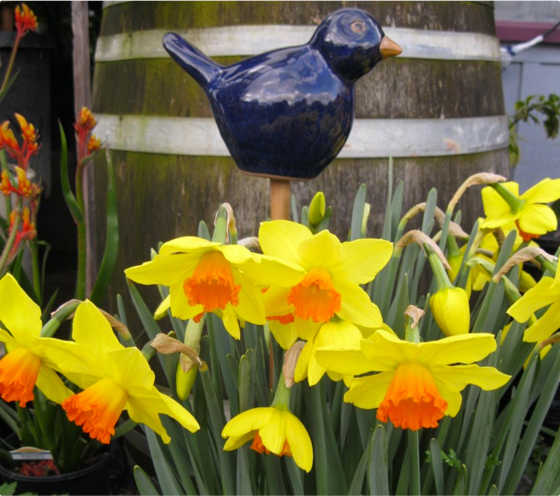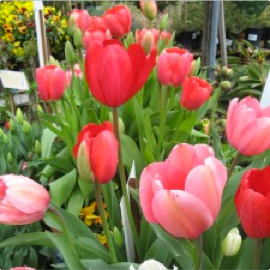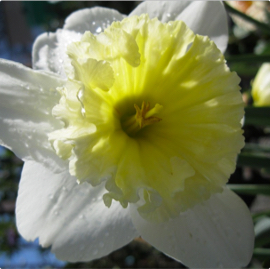by King's Nursery | Feb 2, 2020 | General
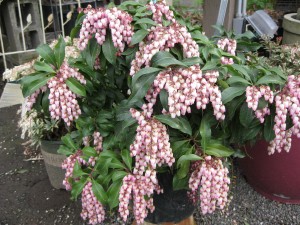
Pieris Japonica- showy!
Most days, while driving frantically to and fro, I don’t pay much attention to things that are growing within my view. The occasional bright yellow daffodil flower, orange poppies or glowing red leaves in the vineyard might catch my eye, but most days I’m focused on my destination rather than the journey itself.
Lately I’ve been noticing several of those kinds of plants- splashes of flowering glory……what I am talking about are early-season flowers, those newly opening signs of spring, many of which are really spectacular!
Gorgeous magnolias (tulip trees), pink and white flowering plum and cherry, brightly-colored quince, golden forsythia, potently fragrant wisteria. Lilacs for sweet-smelling bouquets. Old fashioned dogwood trees, covered in perfectly-formed flowers. Bare branches suddenly burst open with color, a dazzling display that is starting right now.

‘Amethyst Falls’ wisteria
In the shade garden are helleborus that are fully bloomed out, sturdy white flowers that will age to a wine color. Pieris are dripping with strands of hanging ‘bells’, and the camellias are going full blast, with new flowers opening every day.
And DAPHNE! The perfume alone stops me in my tracks, but the pretty evergreen leaves and girly pink flower buds are equally inspiring.
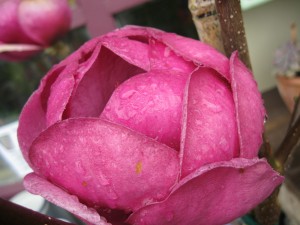
Black Tullip’ magnolia flower
Out front there are some evergreen vines that are starting to pop, like evergreen clematis and jasmine. Hardenbergia, or lilac vine, is also in full glory, with plentiful lavender sprays.
We have all this and more starting to bloom now in our nursery- come by and check out all your options for a show-stopping addition to your garden!
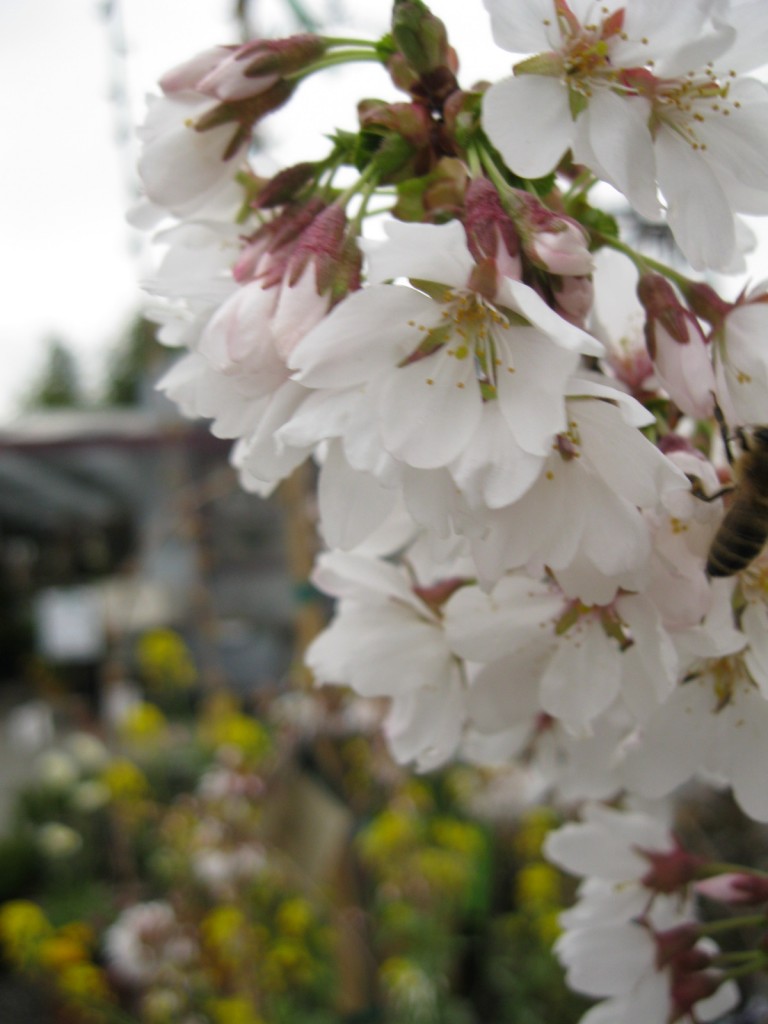
‘snow fountains’ weeping cherry
by King's Nursery | Feb 2, 2020 | General
We’ve got a nice big crop of peonies here! They will be sprouting buds and foliage very quickly! Our peonies are big and full and will bloom beautifully this season- no waiting for years to see a flower. Ready to spring forth with lush foliage and plump buds, and ready to take home now so you can enjoy the unfurling springtime show.
Never grown peonies before? If you like to cut bouquets you will LOVE them! You gotta see these things in bloom…..
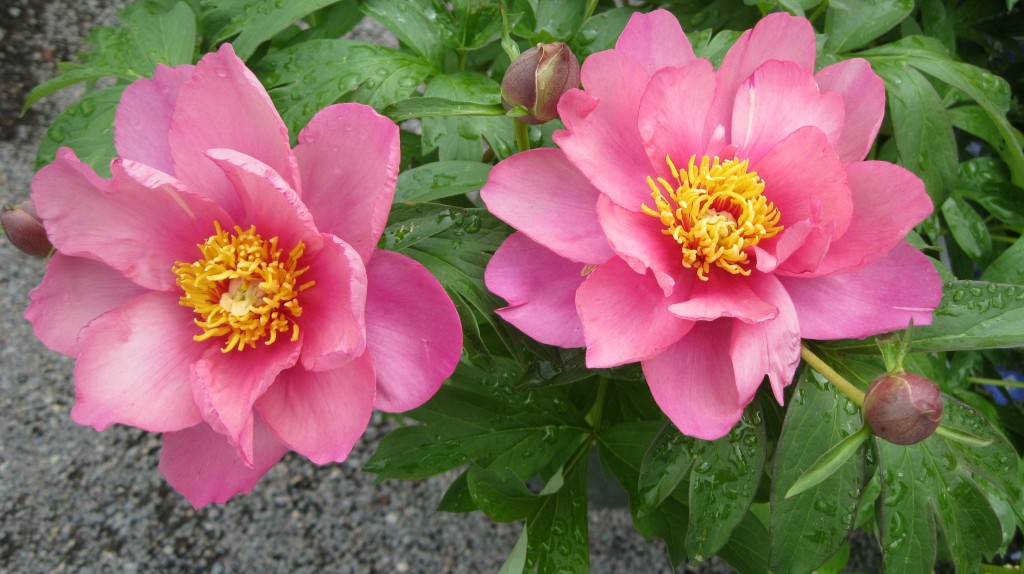
‘Takara’ Itoh peony
We are thrilled to grow peonies every year. Lush plants that have ripe, colorful buds, exotic leaves and breathtaking flowers.
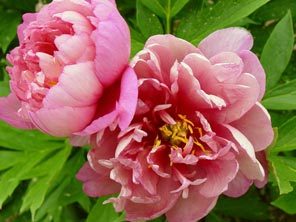
‘Pink Double Dandy’
The peony has always been my dream flower, with it’s distinctive petals and sweet old-fashioned perfume- almost too perfect looking to be real! A photo doesn’t do this beauty proper justice, and if you’ve seen these blooms in reality you know how breathtaking they are.
We’ve got several different kinds right now, grown in large enough containers so as to readily bloom this year. They’re long-lived perennials that can give you lifelong bouquets, and will thrive here in Sonoma County with minimal care when planted properly.
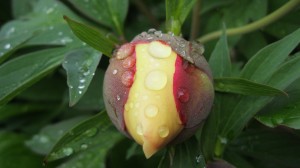
Fat juicy buds
To start, choose a spot that gets full (or at least afternoon) sun. If you’re putting your peony in the ground, work lots of rich compost like Paydirt into the hole, and add some starter fertilizer like Masterstart. This will not only add proper nutrients like nitrogen and phospherous, but will also break up heavy clay soil and promote good drainage. If you’d like to plant in a container, that’s fine- just use Planting Mix straight from the bag, but don’t forget that starter fertilizer.
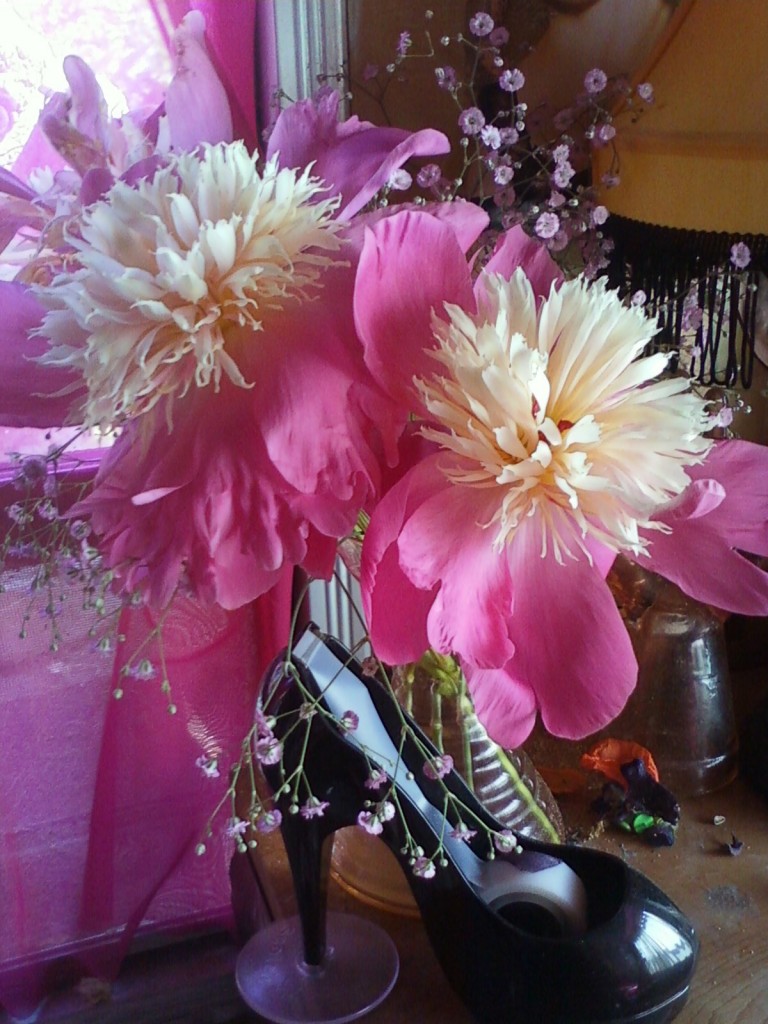
‘Bowl of Beauty’ bush peony
 The most recently developed peonies are exceptionally lush and leafy, with loads of flowers and a more extended bloomtime than old-fashioned kinds. These are the intersectional hybrids called Itoh (eye-toe), a vigorous cross between bush-type and tree-type. You really get the best of both worlds here- flower colors and foliage like the exotic tree peonies, but with the bushier habit and sun tolerance of standard bush peonies.
The most recently developed peonies are exceptionally lush and leafy, with loads of flowers and a more extended bloomtime than old-fashioned kinds. These are the intersectional hybrids called Itoh (eye-toe), a vigorous cross between bush-type and tree-type. You really get the best of both worlds here- flower colors and foliage like the exotic tree peonies, but with the bushier habit and sun tolerance of standard bush peonies.
Cut flower aficionados are just wild about the blooms- extra-large, long-lasting, fragrant, and just downright show-stopping! When you cut a budded stem that is beginning to open, it will continue blooming in the vase for quite a while. Gorgeous!
Cruise on in to check out of our peony selection, and while you’re here we can certainly answer your questions and/or help you pick out the right one for your garden.
by King's Nursery | Nov 13, 2019 | General
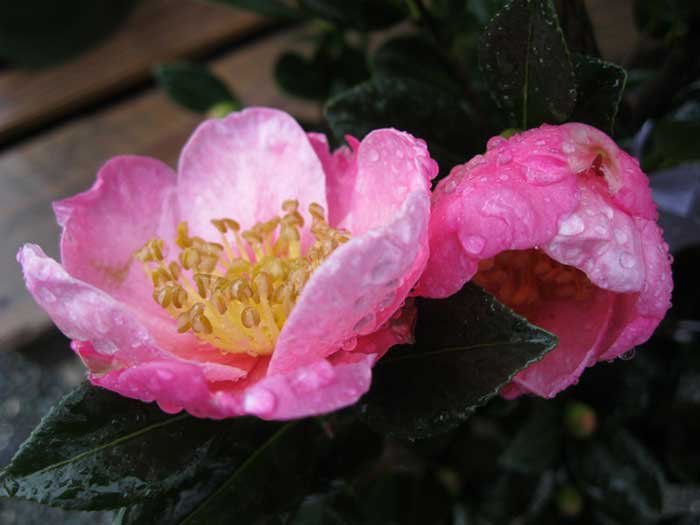
‘Pink-a-Boo’ camellia sasanqua
Boy, are we tending to some hogs right now…….
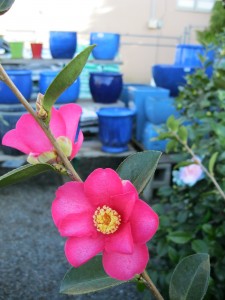
sasanqua perfection- ‘Kanjiro’
This crop of camellias are extra-vigorous, dark green and glossy, with plentiful buds that are starting to pop open. Back in the day these types of plants were called hogs, due to their voracious growth, robust size and top notch quality.
You can get the best selection right now, no slop required.
This is an ideal time to plant camellias. The roots will fill in nicely during these winter months, providing ample support for the plentiful flowers and new growth of the season ahead.
Use some Planting Mix straight out of the bag when you plant in pots, or incorporate Paydirt along with Planting Mix 50/50 with your native soil when installing them in the ground. It’s important to include a starter fertilizer or camellia food into this mix as well, so as to put nutrients right near the roots; this will encourage strong, fast-growing new roots to form.
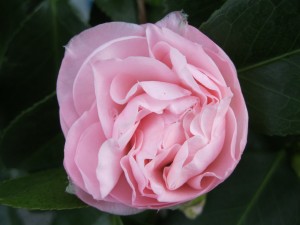
‘Debutante’ camellia japonica, just starting to open
Camellias are low maintenance and fairly drought tolerant once established. There are different types available to suit different planting sites- japonicas are generally shade-loving, while sasanquas will accept full sun as well as shade. Some, like the statuesque reticulatas, grow upright and tall, while others are meant to stay shorter and wider without trimming. Many will sport large, showy flowers, while others bear prolific clusters of bloom. We even have specialty espalier specimens on trellis and topiary tree camellias.
They’re one of those plants that is really versatile. I’ve seen them grown as a flower-filled hedge, as a stately specimen allowed to assume it’s natural form, even potted with colorful bedding plants beneath. I also enjoy cutting branches for flower arrangements, or floating a large blossom or two in a bowl on the table.
So if you’re hankering for a new hog, come take a peek in our pen………
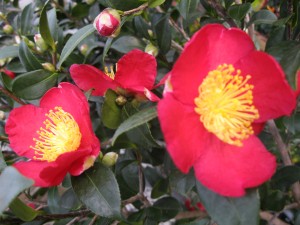
‘Yuletide’ blooms just in time for the holidays
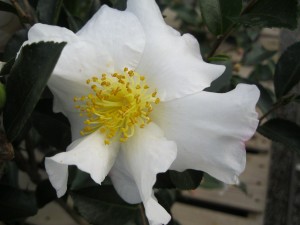
‘Setsugekka’ camellia sasanqua
by King's Nursery | Sep 9, 2019 | General
It’s one of the best times of the year- flowerbulbs are here!
Bright yellow daffodils , vibrant tulips, fragrant hyacinth will sprout forth effortlessly next spring if you take a moment to put them in now. It’s easy to set up a springtime show with bulbs, especially when planted beneath cool season flowers like pansies, poppies, stock and snapdragons. The shoots will grow right up through the plants in spring, creating a fabulous double-decker effect – wow!
Let’s go over the basics:
Daffodils (narcissus) are abundant and reliable, the classic reminder that spring has arrived. The brightly colored flowers are most often yellow, but you also see them in different combinations of orange, white and even pink. The shorter ones are often fragrant.
Tulips come in so many different styles, heights and colors
Fringed, lily-flowered, giant mammoth just to name a few. Some bloom earlier, some later, so you can extend the bloom time by choosing some of each.
Freesia have a sweet citrusy scent
Plant them among other bulbs or perennials; the flowers bloom their way up the gracefully lilting stems for weeks. Great cutflower.
Bearded Iris have evergreen leaves
And many of the newer varieties will bloom for most of the year,Gorgeous, seemingly delicate flowers are quite large, sporting a noticeable ‘beard’ on the lower hyacinth are suited to a fair amount of shade. Full and colorful clusters of bloom are compact, upright and potently fragrant. Great for pots or in borders.
Dutch Iris have been a staple at the florist for many years
Make a statement with a large number of bulbs planted ‘shoulder to shoulder’ in a large hole, or mix some into the perennial garden.
We’ve also got the more unusual stuff, like ranunculus, anemone and sparaxis. The earlier you buy, the better the selection, so come by soon to check ’em out!
by King's Nursery | Sep 8, 2019 | Front Page News, General
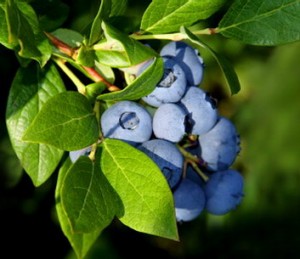
Ready for picking
It’s berry time, and we’ve got a nice crop of plants that will be so LOADED with berries next spring that you will barely see the leaves! They will give a harvest that first season and fruit will be produced for months, so they’re gonna give you you’re money’s worth right away.
Why we love blueberries-
Blueberries are an excellent and permanent addition to edible and ornamental landscapes because, thanks to modern breeding, they are very easy to grow. The handsome plants have dark blue-green foliage and attractive pink or white ‘ bell’ blooms in spring, which turn into yummy blue summer berries.
Some even have great autumn color, with a full spectrum of yellow, orange and red. All can be planted in the veggie garden or used in the landscape. All this and the bonus of luscious fruit loaded with anti-oxidants! Since they are a permanent addition to the garden, the yields of berries increase each year.
Planting
In our fabulous gardening climate, blueberries can be planted most anywhere from full sun to part sun. Just be sure the location gets at least a half a day of good sunlight. Since they are long lived, it is a wise idea to amend the soil properly when planting. A wide, fairly shallow planting hole, backfilled with half Master Nursery Planting Mix and half our native soil along with a dollop of Master Start fertilizer would be great. After planting, mulch with a bit of additional Planting Mix to help with moisture retention. Planting distance can be up to 5 feet apart or as close as 3 feet for a hedge effect. Or, intersperse them throughout the garden. Blueberries easily adapt to containers and to make it even easier, you can use Master Nursery Planting Mix straight from the bag. You could even add flowers and herbs to the container for a beautiful effect.
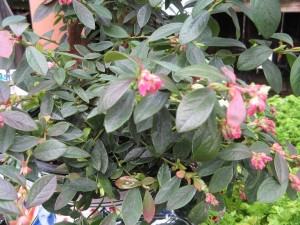
Blueberries are ornamental, too
Care
It’s so easy! The new blueberries are low maintenance, vigorous plants. They like routine water like your other garden plants and monthly feeding  March through October with our Camellia Azalea food or our veggie food. Your berries will produce more and bigger fruit with a bit of winter pruning. First remove any dead wood, then thin out about a third of what remains. As the plant grows older, you can select six or so main erect branches to form its permanent structure.
March through October with our Camellia Azalea food or our veggie food. Your berries will produce more and bigger fruit with a bit of winter pruning. First remove any dead wood, then thin out about a third of what remains. As the plant grows older, you can select six or so main erect branches to form its permanent structure.
Selection
We select and prefer the southern highbush varieties as they are particularly suitable for our Sonoma County climate. They love the warm days as well as the cool ones and thrive in our mild winters. Three plants are about the minimum for a family but there are, of course, no limits. Blueberries are self pollinating. So, if you remember 7th grade science, that means you only need one plant to get some fruit. However, the more the merrier in the world of the birds and bees. In fact, the fruit will be much more prolific if you plant two or more varieties. Also, by mixing varieties you can easily extend your harvest. Some of our favorites (but we love them all)…
Jubilee: Fruits early, nice and upright
Misty: Fruits very early with lots of berries
O’Neal: Another very early variety
Sharpblue: Fruits early to mid season and great to extend the season. Fast grower with big berries.
Star: Fruits early with large berries
Sunshine Blue: Mid season, a more compact plant and evergreen.
Plus others, of course, and please feel free to ask us any questions about blueberries or other parts of your garden. At least in the garden, we want you happy, healthy and successful.














